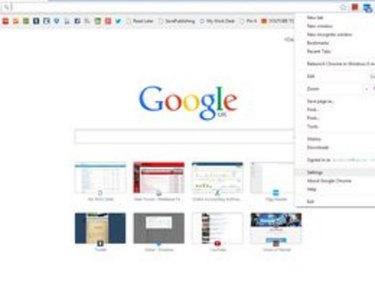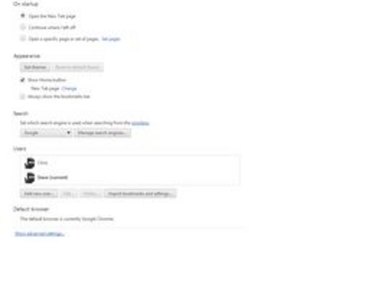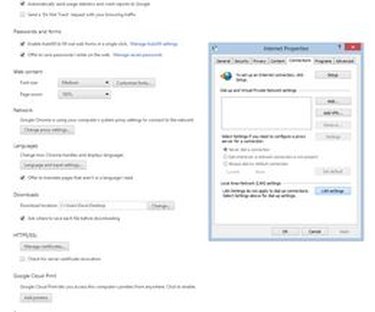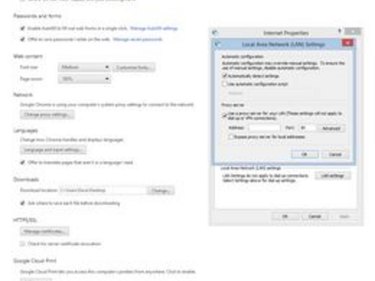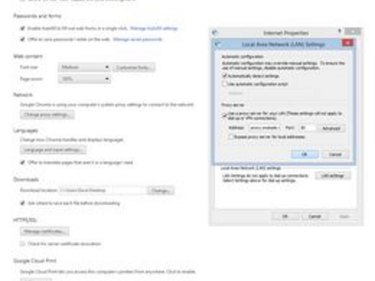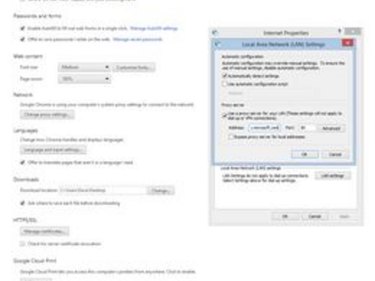
When you use a proxy server with Google Chrome or another Web browser, your Web browser sends all your Web browsing traffic to the proxy, which acts as an intermediary between your computer and the Web servers. A proxy can cache frequently requested Web content, deny access to specific content or log Web browsing traffic. Some networks may require a proxy server to access the Web. Google Chrome uses your system-wide proxy settings, configured in the Windows Internet Properties dialog.
Step 1
Click the Chrome menu icon at the upper right corner of the Google Chrome window (three horizontal lines and select "Settings."
Video of the Day
Step 2
Select the "Show Advanced Settings" link on the options tab.
Step 3
Click "Change Proxy Settings" underneath the Network heading.
Step 4
Click the "LAN Settings" button in the Internet Properties window that appears.
Step 5
Click the "Use a Proxy Server for Your LAN" check box.
Step 6
Type the proxy server's address into the Address box and the port it uses into the Port box.
Video of the Day
